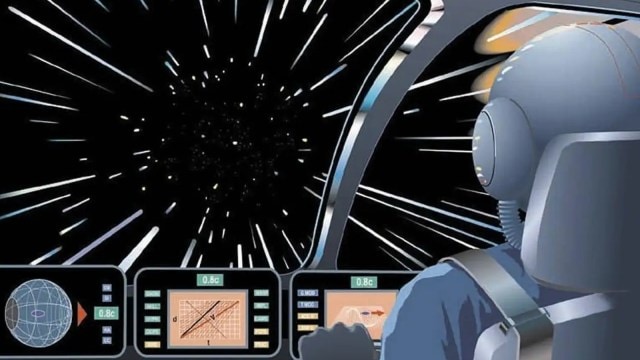Scientists explore if warp drives can help detect extraterrestrial life through gravitational waves
A failed warp ship could be the answer to finding the alien life.
 A sketch of a spacecraft travelling at warp speed (Image credit: NASA)
A sketch of a spacecraft travelling at warp speed (Image credit: NASA)Not many are convinced of extraterrestrial life, but a paper published by Cornell University said warp drives––spacecraft capable of distorting the shape of the space-time continuum and thereby beating the speed of light—might help scientists identify extraterrestrial life. Yes, the search for alien life could find an unexpected ally in comic books and sci-fi movies like Star Wars and Star Trek, which have repeatedly explored the idea of warp drives.
Despite their seemingly fictional nature, warp drives adhere to Einstein’s general relativity principles. Famous physicist Miguel Alcubierre published a ground-breaking paper in 1994 titled “The warp drive: hyper-fast travel within general relativity,” linking warp drives with general relativity. Alcubierre proposed that a spacecraft could surpass the speed of light by creating a “warp bubble,” which contracts space ahead of it while expanding space behind it.
Rather than propelling the spacecraft to light speed, warp drives manipulate the space surrounding them, enabling faster-than-light travel by warping the fabric of space itself. These devices, also called warp machines, remain theoretical with current human technology. Achieving “warping” speed requires negative energy, which is currently speculative and can only be found in sci-fi movies and TV shows.
A failed/broken warp drive might be the solution to finding alien life
Current technology is not capable enough to build a spacecraft that can surpass light speed. However, we have supercomputers that can simulate one to help understand its behaviour. A group of scientists––Katy Clough from Queen Mary University of London, Tim Dietrich from the Max Planck Institute for Gravitational Physics and Sebastian Khan from Cardiff University––are now interested in understanding what would happen if a warp drive fails.
The Laser Interferometer Gravitational-Wave Observatory (LIGO) is used to observe the ripples in spacetime caused by cosmic events, which is also said to be capable of detecting a change in gravitational waves.
When a warp drive collapses, it will result in the release of powerful gravitational waves, which will impact spacetime, as these waves can disturb the matter in space and redistribute the energy, which could be similar to the waves created in a stagnant pond due to an external object like a stone.
Using numerical relativity, scientists can simulate the effects of strong gravitational forces generated by warp drives. This simulation can help them understand how these forces affect their surroundings and potentially identify natural occurrences that mimic these signatures, aiding in the search for extraterrestrial life.
Scientists say a spacecraft travelling at just 10 per cent of the speed of light can generate a 300 kHz signal, which can be detected from 3.26 million light years away.
For now, this is all theory and is far away from being real, and for most, it definitely sounds more fictitious than fact.
However, this is how science works, with curiosity and challenges. It will be interesting to see how fast scientists can work on these concepts to get a deeper understanding of space and science.







